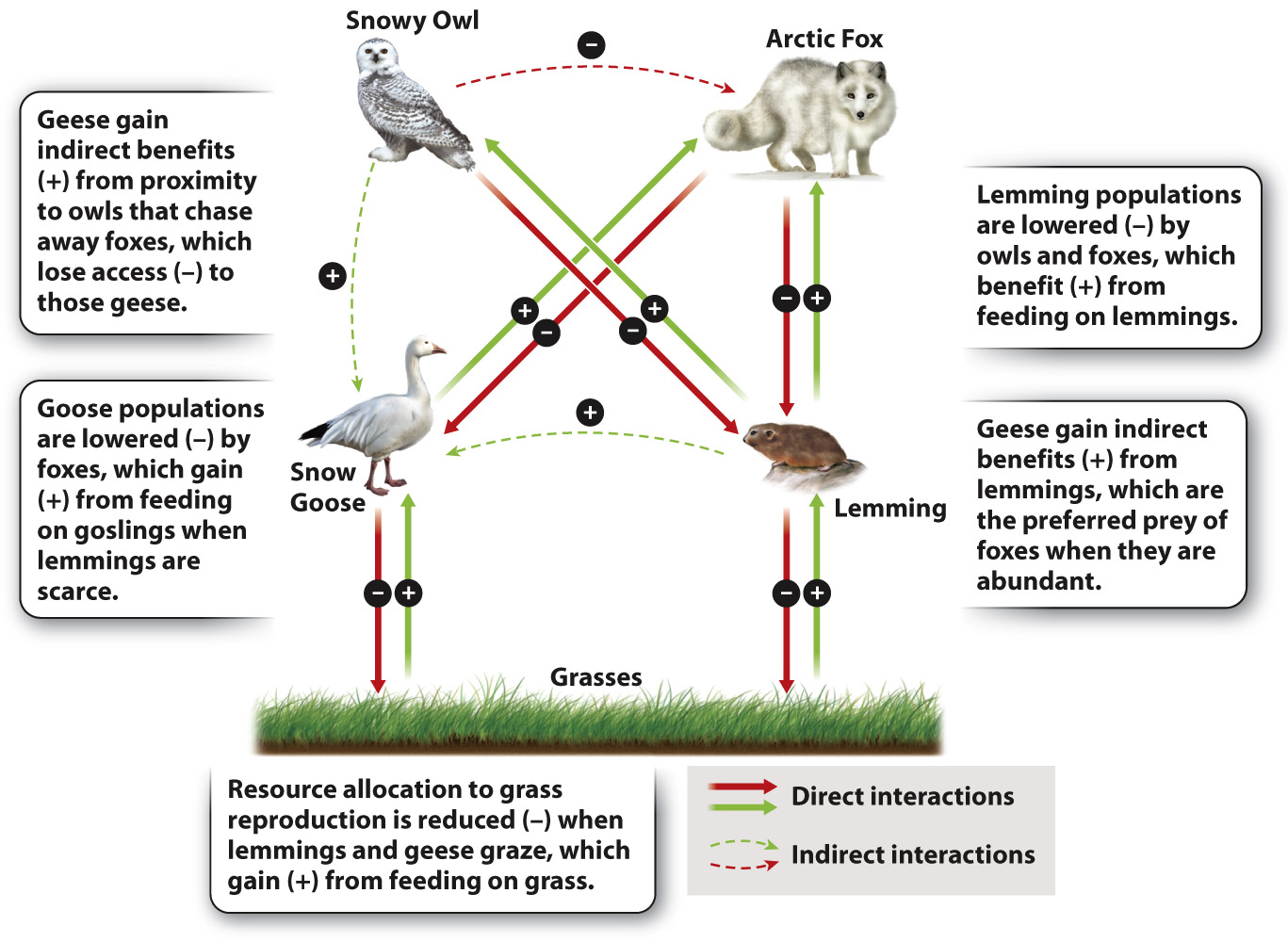One species can have a great effect on all other members of the community.
Predators and prey interact in settings as different as a tropical rain forest or Arctic tundra. In habitats with many different predator and prey species, identifying the ways that each species affects others can be challenging. For this reason, much research on how predators and prey influence community structure has been carried out in the Arctic, where communities tend to have relatively few species.
One well-studied community is found on Bylot Island in the Canadian territory of Nunavut. There, two species of lemming, the main herbivores in tundra communities, affect the populations of other herbivores and predators. Snow Geese are herbivores that live alongside the lemmings, and both geese and lemmings eat the grasses and other low plants that grow on the island. The main predators of lemmings and Snow Geese are Arctic Foxes and Snowy Owls. Lemmings, foxes, Snowy Owls, geese, and plants, then, are linked by a set of interactions, as shown in Fig. 47.11. Changes in one species can affect all of the others.

FIG. 47.11 Predator–prey relationships in the Arctic grassland community on Bylot Island, Canada. Species have either a positive effect (+) or a negative effect (–) on other species.
Lemming populations rise and fall every 4 years or so. When lemming populations decline, foxes turn to other prey, including the eggs of Snow Geese (while the now harder-to-find lemmings escape and their populations begin to increase again). Snow Geese, therefore, are indirectly influenced by lemming population densities. The population density of foxes also reflects that of lemmings—as lemming populations increase to the point at which they can again become a significant part of fox diets, the foxes have access to enough resources to have more pups, increasing the fox population. In time, the additional predators again cause the lemming population to decline, and fox reproduction drops as a result. The population density of lemmings also influences grass abundance through its indirect effect on whether or not foxes eat Snow Goose eggs; young geese are heavy grazers in years when goose reproduction is high.
